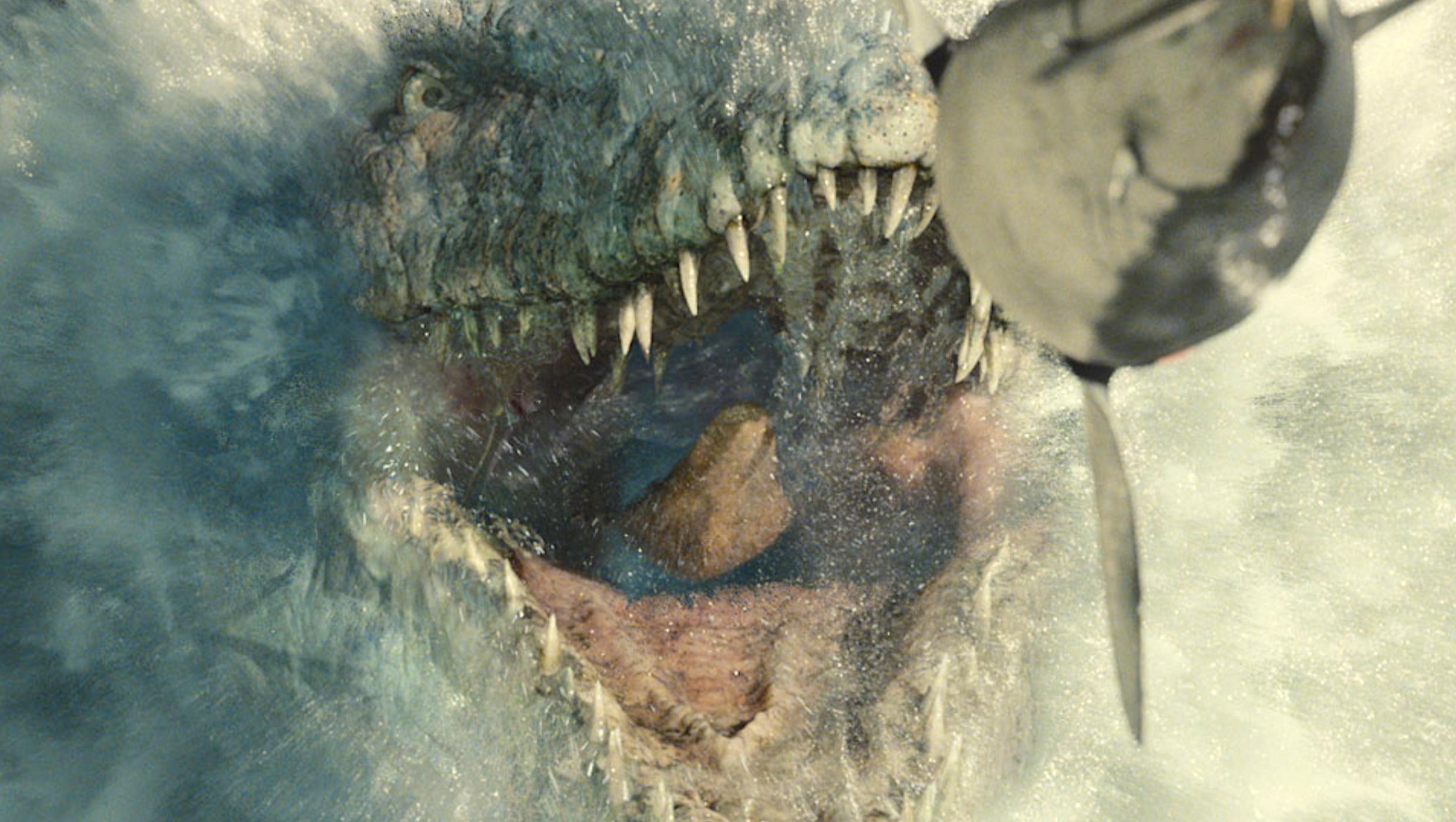Create a free profile to get unlimited access to exclusive videos, sweepstakes, and more!
Something ripped off half this mosasaur’s face, proving even dinos beat each other up

Remember that epic scene in Jurassic World where the mosasaur leaps from its tank and snaps up Indominus Rex as a midnight snack? If it was facing off against another mosasaur, that could have meant doom.
Jurassic Park and Jurassic World movies have shown us dinosaur fights from T. Rex vs. Indominus Rex to Velociraptor vs. Indoraptor, but dinos of the same species beating each other up isn’t just a sci-fi stunt. While the mosasaur in a prehistoric theme park might have been the ultimate predator, a recently observed fossil suggests these extinct sea monsters probably went at each other. This fossil literally had half its face bitten off by what could only be another mosasaur.
Paleontologist Dylan Bastiaans and his team, who published a study in Cretaceous Research, have unearthed rare evidence for a case of intra-species violence among dinosaurs. There was more to this investigation than just proving this unfortunate mosasaur was the victim of its own kind. What actually killed it may not have been the bite itself, which took out part of its upper left jaw, but a gnarly infection that spread through what remained of that jaw after the fight. The team used X-rays and CAT scans to study the fossil up close so they could determine whether the wound itself or a fatal infection sent this mosasaur to its watery grave.
“[The injuries] all indicate a traumatic origin,” said Bastiaans, meaning that they were caused by some sort of outside force while the creature was alive, rather than the bones disintegrating as they fossilized.
So how did the team prove who the perpetrator was? They approached the remains like paleo-coroners trying to figure out a cause of death. Prehistoric sharks, crocodilians and, elasmosaurids — long-necked marine dinos that mostly ate crustaceans and mollusks — were ruled out. Some of these creatures were not common in the area, but really, none of the them would have even been a match for a monster that was at least 33 feet long and weighed about 30,000 pounds. There just wasn’t enough bite force to leave behind a wound that ghastly. The teeth that chomped down on the victim’s jawbone left behind telltale marks that gave away the species they belonged to. The bite was also powerful enough to rip off part of the premaxilla, or upper jaw, and penetrate the cortical bone, or the outer layer of bone that protects the internal cavity. The shape and depth of the lesion also screamed of mosasaur teeth.
“The only plausible attacker with sufficient bite force to penetrate the cortical bone to such an extent is another mosasaur,” Bastiaans and his team concluded, identifying the wound as a “tooth strike lesion.”
The infection ended up being worse than the bite. While mosasaurs are thought to have had strong immune systems, and the researchers believe the victim had started to recover from the injury, the inner bone and marrow that had been exposed were left vulnerable to bacteria. Chronic inflammation is believed to have been caused by a bacterial infection that only kept spreading. As if a horrible infection isn’t enough torture, inflammation most likely made it difficult for the attacked mosasaur to feed. It just couldn’t work its jaws the same way. For a predator like this to have its jaw function severely limited was basically a death sentence, since it probably couldn’t shred prey like it used to.
Extant and extinct crocodilians, which are often compared to mosasaurs physically and behaviorally, often develop bone-penetrating infections in deep facial wounds. It is highly possible that the infection only found it easier to spread because soft tissue and newly generated bone couldn't isolate the infection. This only worsened inflammatory pressure on the bone, which could have cut off blood supply. Lack of oxygenated blood leads to tissue necrosis. Dead tissue would have only exposed more bone. You can see where this is going.
“The negative effects of the infection associated with the trauma could have contributed to the eventual death of this individual,” Bastiaans said. “It appears that the infection was still ongoing at the time of death.”
But why did a fight break out in the first place? The team suggests it must have been a particularly gruesome competition. Whether that was territorial, over a female, or was triggered by something else remains unsure, but they are mostly positive that mosasaurs were not cannibals and therefore were not purposely trying to eat each other — despite how suspicious the bite taken out of the victim’s skull may appear. They were vicious predators that obviously didn’t take it too well if they got in each other’s way.
That mosasaur in Jurassic World had no idea what it escaped by getting the tank all to itself.


























